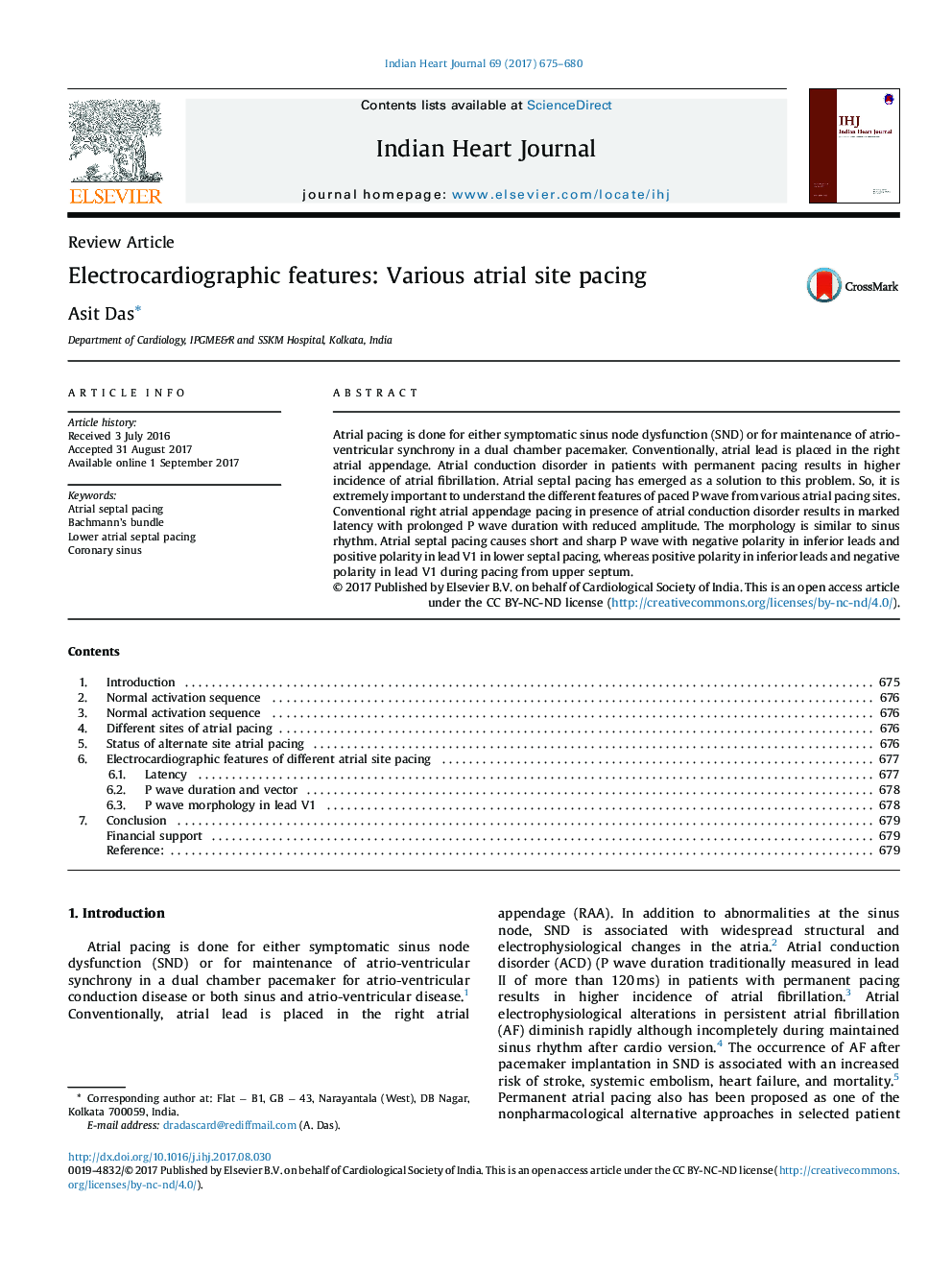| Article ID | Journal | Published Year | Pages | File Type |
|---|---|---|---|---|
| 5603951 | Indian Heart Journal | 2017 | 6 Pages |
Abstract
Atrial pacing is done for either symptomatic sinus node dysfunction (SND) or for maintenance of atrio-ventricular synchrony in a dual chamber pacemaker. Conventionally, atrial lead is placed in the right atrial appendage. Atrial conduction disorder in patients with permanent pacing results in higher incidence of atrial fibrillation. Atrial septal pacing has emerged as a solution to this problem. So, it is extremely important to understand the different features of paced P wave from various atrial pacing sites. Conventional right atrial appendage pacing in presence of atrial conduction disorder results in marked latency with prolonged P wave duration with reduced amplitude. The morphology is similar to sinus rhythm. Atrial septal pacing causes short and sharp P wave with negative polarity in inferior leads and positive polarity in lead V1 in lower septal pacing, whereas positive polarity in inferior leads and negative polarity in lead V1 during pacing from upper septum.
Keywords
Related Topics
Health Sciences
Medicine and Dentistry
Cardiology and Cardiovascular Medicine
Authors
Asit Das,
